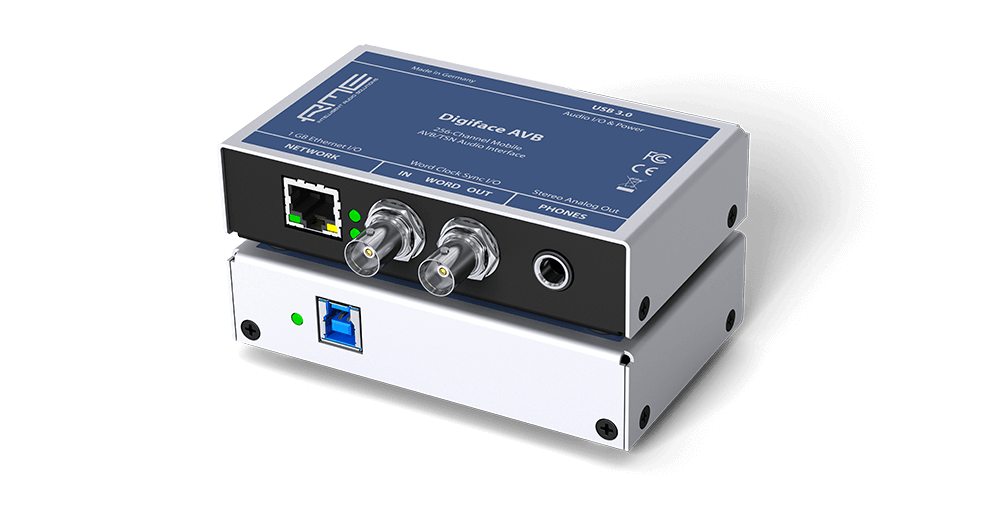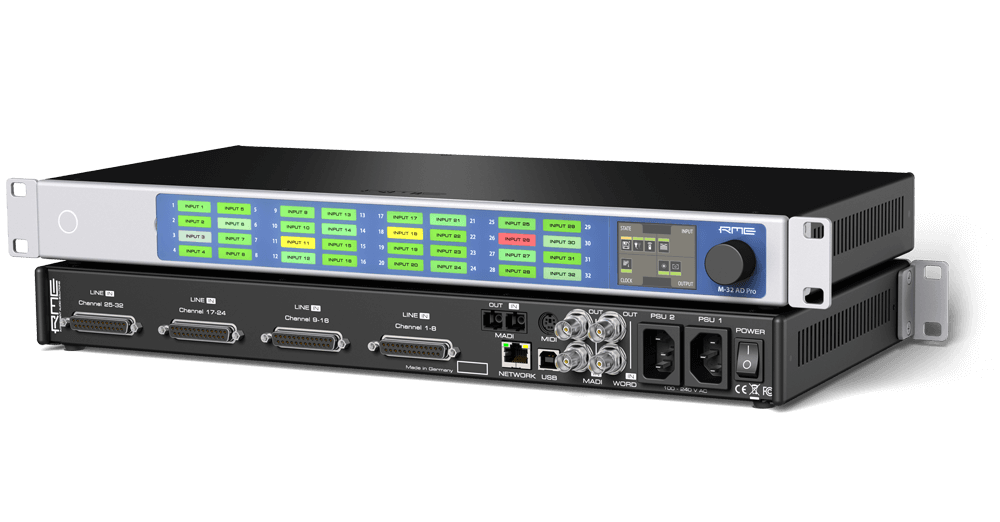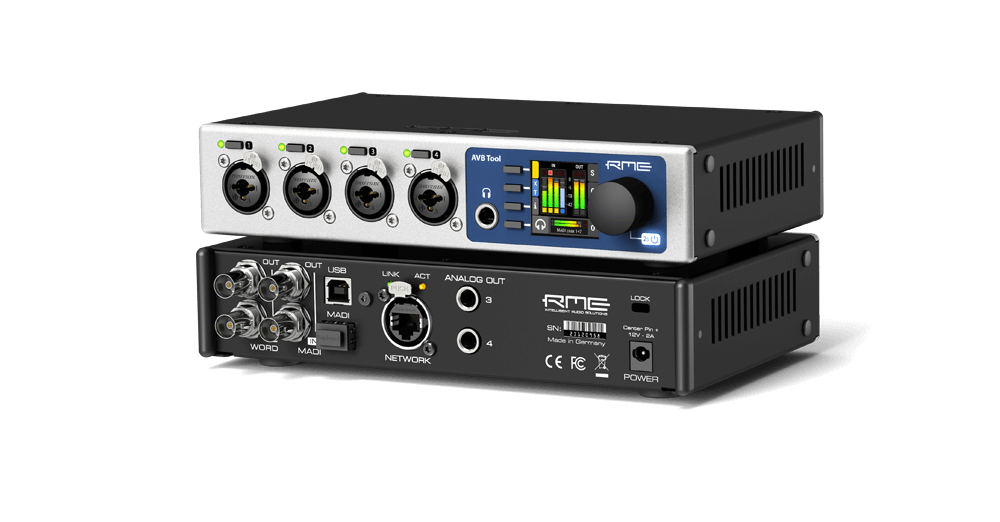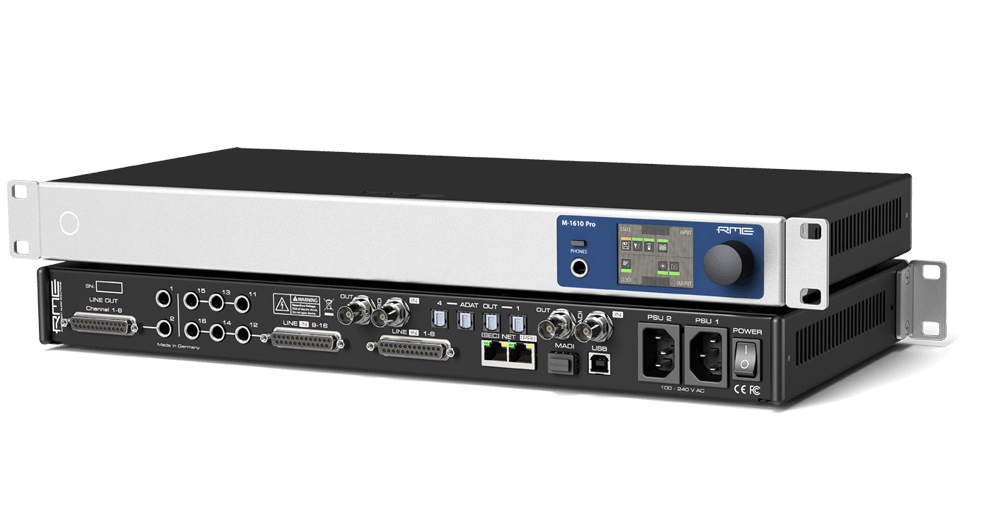12Mic
12-channel digitally controlled microphone preamplifier with AVB & MADI
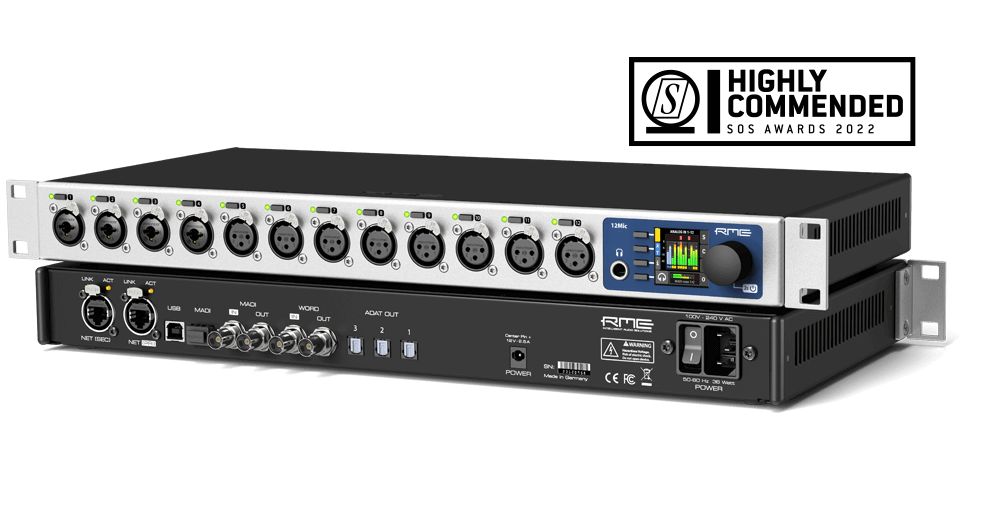

Conexiones y características
Designed for the Next Decade - RME’s first preamp for Audio Networks
The RME 12Mic features twelve microphone and line level inputs with digital, no-compromise, studio-quality conversion; remote controllable gains; integrated MADI and AVB connectivity; plus a multitude of additional functionality, designed to make it the perfect companion for any professional recording setup.
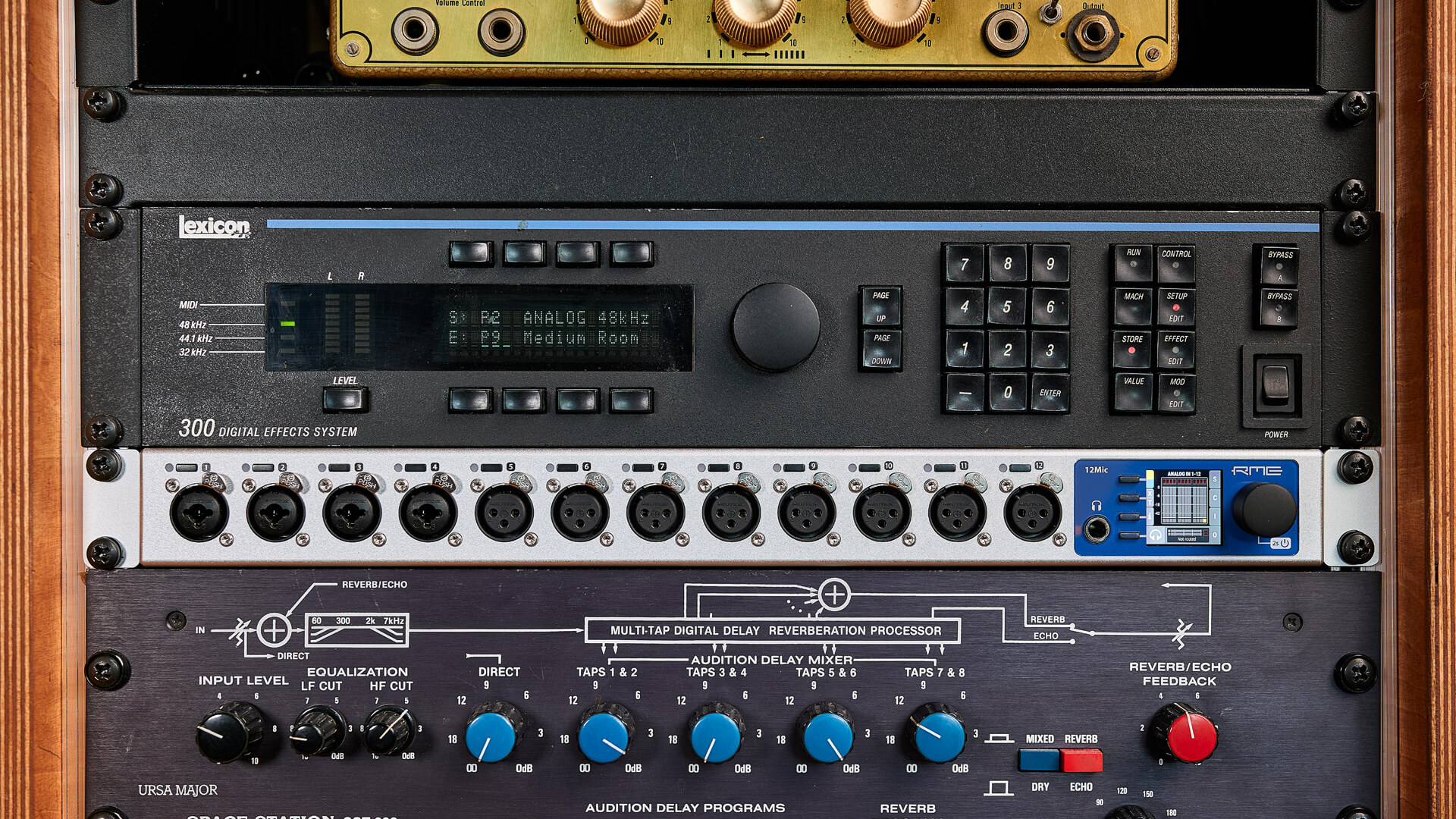
RME Audio mic pres deliver pristine, transparent audio reproduction.
Twelve transparent mic preamps for exceptional conversion performance
The PAD-free microphone input stages have a 75 dB gain range and accept signals of up to +18 dBu. On the converter side, the 12Mic shines with an outstanding signal-to-noise ratio on all channels. All twelve front-facing XLR connections accept microphone and line level signals, whilst the first four connections also accept TRS connectors, with switchable high impedance (Hi-Z) for instruments.
MADI & ADAT for maximum flexibility
Both coaxial and optical (via an SFP module) MADI I/O is available for independent or redundant operation, and can be used for daisy chaining, merging and converting MADI signals at incredibly low latency. Three optical ADAT outputs provide up to 24 channels of audio at single speed (for example, a combination of microphone inputs, MADI signals and AVB signals), or 12 output channels at 96 kHz sampling rate, ensuring compatibility with a wide range of audio interfaces. Additionally, the ADAT ports can also be used to send monitor mixes from the AVB or MADI inputs to existing DACs/headphone amps.
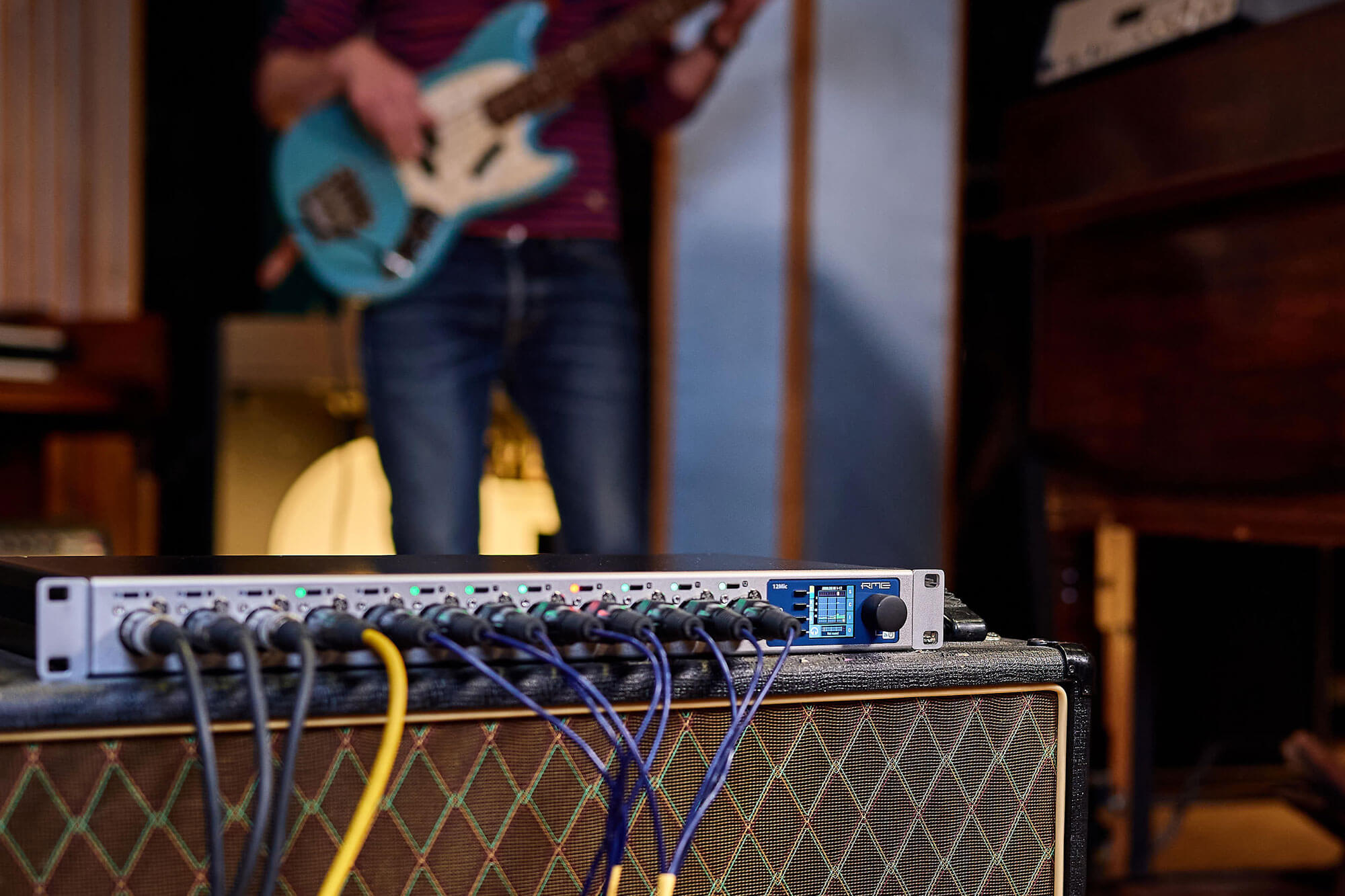
Four connections also accept TRS connectors with switchable high impedance (Hi-Z) for instruments.
AVB Audio Networking - 2 fully redundant network ports
For the first time, RME offers an AVB device with two fully redundant network ports, based on the recommendations of MILAN. The RME AVB Core has meticulously implemented the IEEE standards for audio- streaming, discovery and control, allowing RME devices to be both discovered and fully controlled by any AVB controller, and making vendor-specific control protocols a thing of the past. Any signal reaching the 12Mic can be routed and streamed over a network with fixed latency and guaranteed bandwidth - no switch configuration is required!
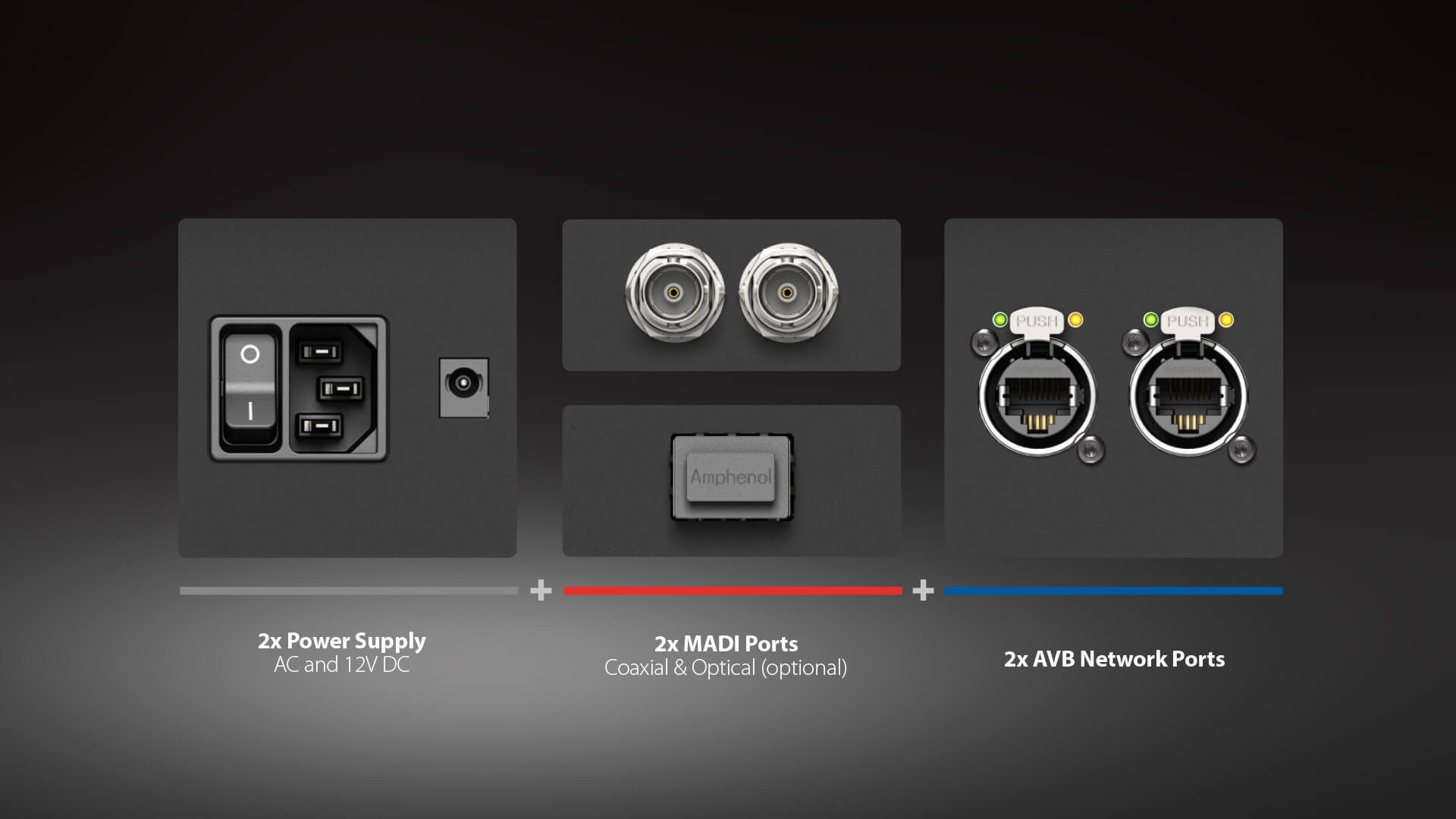
Multiple layers of redundancy make the 12Mic a perfect companion for any kind of live sound application.
Plug & play - rapid user interaction
Control all device states directly from the front panel for convenient, direct access to all features. RME AVB devices can also be fully remote controlled via a web-interface on any network link (including wirelessly over Wi-Fi), allowing for the rapid creation of gain groups, phantom power switching, and routing of signals to headphones for monitoring. The integrated routing matrix allows for quick routing of any analog inputs straight to the headphone output, as well as all digital signals and AVB streams. As such, problem-solving of signals, clocking, connectivity or other issues is both simple and straight-forward!
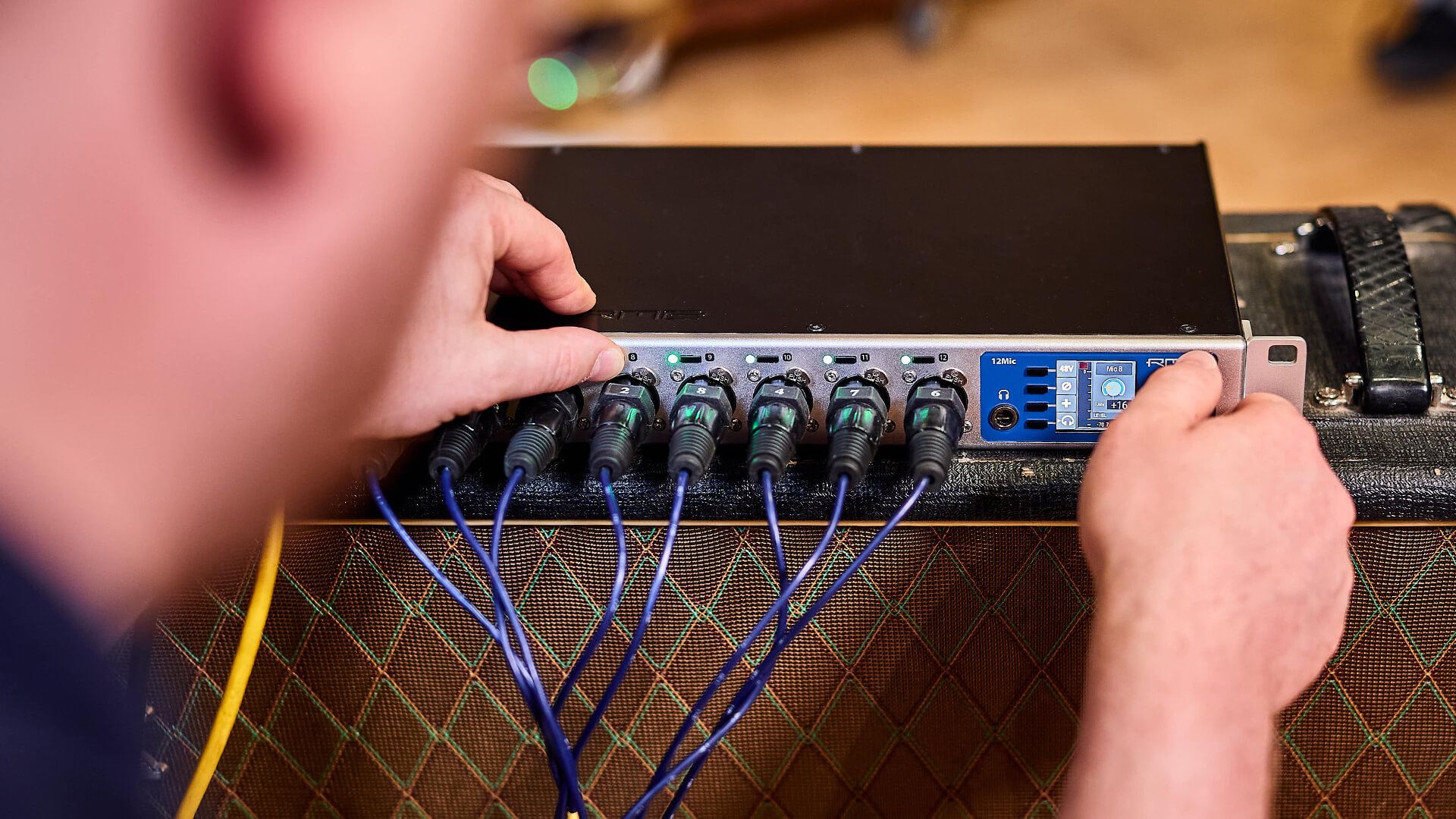
The 12Mic user interface optimized for rapid configuration & control.
States or controls can be operated directly on the front panel for each channel.
SteadyClock FS - Reference class Digital Clocking
In digital audio, the clock frequency is an essential factor, as it creates the correlation between the audio bits and the time reference. Unfortunately, the clock frequency is not always as stable as desired. The 12Mic offers full SteadyClock FS performance for lowest jitter and highest jitter immunity.
Excellent performance in all clock modes and High Quality Analog Conversion to hear your mix as it is. Digital format conversion in RME products are done without any loss or degradation, and SteadyClock FS ensures your sonic image will never experience degredation. This helps to optimize recordings and mixes because the soundstage has more depth and clarity.
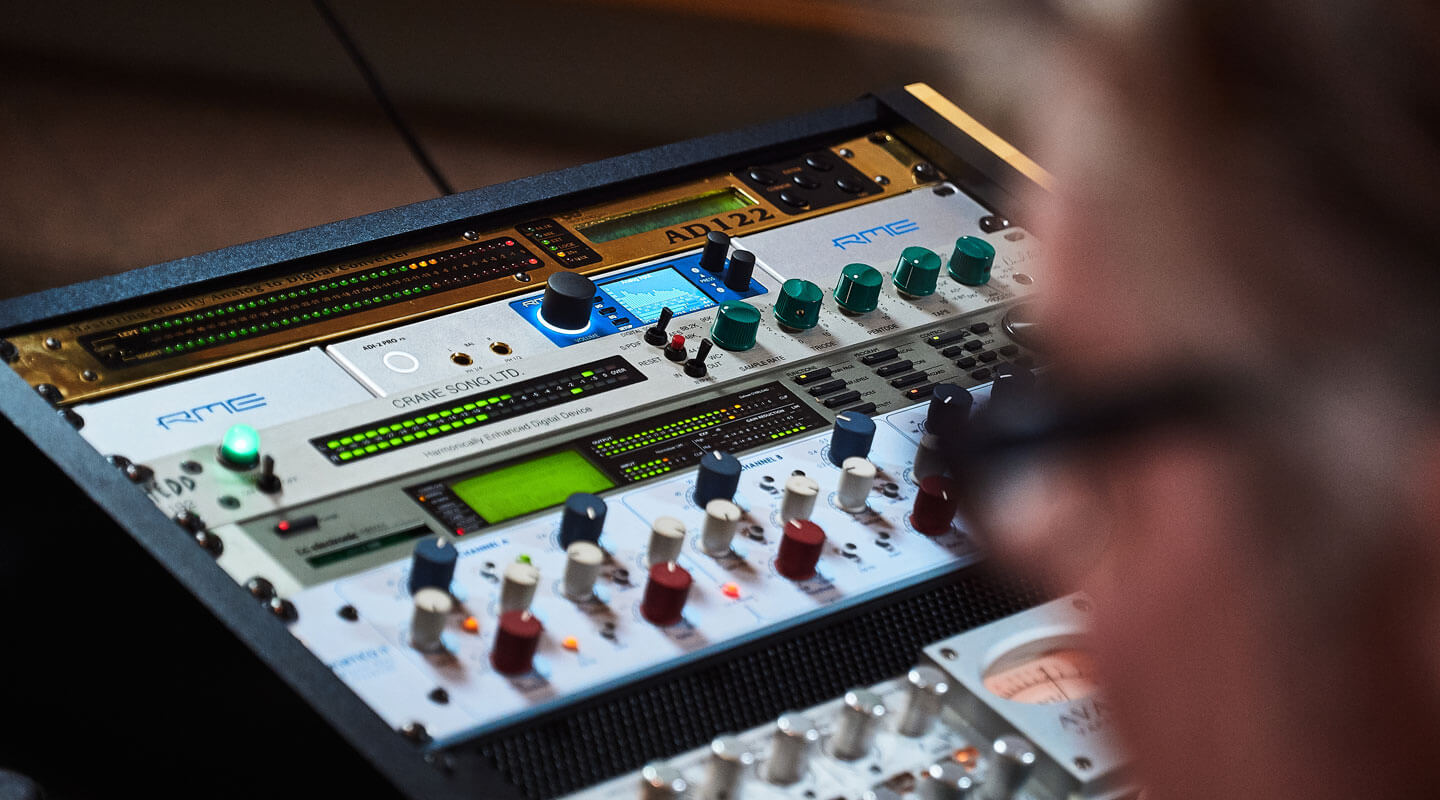
SteadyClock FS Technology from the countless award winning ADI-2 Series
About MADI - Multi Channel Digital Audio Protocol
MADI is a protocol that has evolved alongside RME to be the most widely accepted multi channel digital audio protocol on the market. RME’s MADI-based systems deliver incredible reliability, particularly in applications where failure is not an option.
Accesorios
Optical MADI SFP Module (optional available)
This module extends compatible RME devices with an optical SFP transceiver. Up to 64 audio channels can then be sent to and received from other MADI devices. THE RME SFP module is available in a Multi-Mode and in a Single-Mode version, it can be inserted and removed while the RME MADI device is powered on. It is not necessary to power down the device.
Especif
Inputs
XLR In 1-12:
- Input: XLR, electronically balanced
- Input impedance: 3.4 kOhm
- Gain range: 75 dB, 1 dB steps
- Resolution AD: 24 bit
- Frequency response @ 44.1 kHz, -0.1 dB: 8 Hz – 20.8 kHz
- Frequency response @ 96 kHz, -0.5 dB: 4 Hz – 29.2
- Frequency response @ 192 kHz, -1 dB: 3 Hz – 43.7
- THD @ 30 dB gain: < -110 dB, < 0.00032 %
- THD+N @ 30 dB gain: < -104 dB, < 0.00063 %
- Channel separation: > 110 dB
- Signal to Noise ratio (SNR): > 117 dB RMS unweighted, > 120 dB(A)
- Equivalent Input Noise (EIN), 30 dB Gain: 123 dB RMS unweighted, 125.5 dB(A) @ 150 Ohm
- Maximum input level, Gain 0 dB: +18 dBu
- Maximum input level, Gain 75 dB: -57 dBu
TRS In 1-4:
As above, but:
- Signal to Noise ratio (SNR): 115 dB RMS unweighted, 118 dBA
- TRS jack, balanced
- Gain range: 42 dB, 1 dB steps
- Maximum input level, Gain 8 dB: +20 dBu
- Maximum input level, Gain 50 dB: -22 dBu
- Switchable high impedance (unbalanced TS): 1 MOhm
MADI:
- Coaxial via BNC, 75 Ohm, according to AES10-1991
- Optical via optional SFP module
- 62.5/125 and 50/125 compatible
- Accepts 56 channel and 64 channel mode, plus 96k Frame
- Single Speed: up to 64 channels 24 bit 48 kHz
- Double Speed: up to 32 channels 24 bit 96 kHz
- Quad Speed: up to 16 channels 24 bit 192 kHz
Word Clock:
- 75 ohm Word Clock BNC connectivity
- Support 44.1kHz - 192kHz
- Support full or single speed operation
- SteadyClock FS extracts low jitter clock signal
- Intelligent Clock Control switches clock source seamlessly
Outputs
Phones 1/2:
- Resolution: 24 Bit
- Noise (DR): 115 dB RMS unweighted, 118 dBA
- Frequency response @ 44.1 kHz, -0.5 dB: 9 Hz – 22 kHz
- Frequency response @ 96 kHz, -0.5 dB: 9 Hz – 45 kHz
- Frequency response @ 192 kHz, -1 dB: 8 Hz - 75 kHz
- THD+N: < -100 dB, < 0.001 %
- Channel separation: > 110 dB
- Output: 6.3 mm TRS stereo (unbalanced) or mono (balanced) jack
- Maximum output level at 0 dBFS: +13 dBu (unbalanced), +19 dBu (balanced)
MADI:
- Coaxial via BNC, 75 Ohm, according to AES10-1991
- Optical via optional SFP module
- 62.5/125 and 50/125 compatible
- Accepts 56 channel and 64 channel mode, plus 96k Frame
- Single Speed: up to 64 channels 24 bit 48 kHz
- Double Speed: up to 32 channels 24 bit 96 kHz
- Quad Speed: up to 16 channels 24 bit 192 kHz
ADAT:
- 3 x TOSLINK
- Quad Speed (S/MUX4): 1 x 2 channels 24 bit 192 kHz
Word Clock:
- 75 ohm Word Clock BNC connectivity
- Support 44.1kHz - 192kHz
- Support full or single speed operation
- SteadyClock FS extracts low jitter clock signal
- Intelligent Clock Control switches clock source seamlessly
General
- 2x RJ45 1 GigE AVB, 8 streams (each up to 16 ch.) per direction with redundancy
- MADI input redundancy (requires optional SFP module)
- Internal routing of up to 268x282 channels
- 19” enclosure 1 unit height
- 1,54” full color display with control knob and four buttons for convenient, direct access to all features
- SteadyClock FS - ultra-low jitter digital clock technology
- Remote control via HTTP, JSON, IEEE 1722.1 ATDECC, MIDI over MADI
- internal PSU, optional 12V DC redundant power supply
- USB 2.0 (for remote control and firmware updates)
- DC-coupled outputs
Hardware Specifications
- Dimensions: 440 x 44 x 243 mm (17.3 x 1.7 x 9.6 inches)
- Weight: 2.8 kg (6.2 lbs)
- Package: 560 x 315 x 115 mm (22.1 x 12.4 x 4.5 inches)
- Conformity: CE, FCC, WEEE, RoHS
- Power supply: internal 30 W 100-240 V AC, external 12 V 2.5 A DC (optional)
- Power consumption: typ. 20 W, standby 0.5W
All specifications are subject to change without notice.
Controladores
Firmware 2.0.0. Main update. Adds MILAN certification. Carefully read the instructions in the readme.pdf!
Firmware 1.7.1, 06/11/2023. Main update. Carefully read the instructions in the readme.pdf!
Version 2.0.0 with support for the 12Mic, 12Mic-D, AVB Tool and OctaMic XTC, requires macOS 10.15 or newer!
Version 2.0.0 with support for the 12Mic, 12Mic-D, AVB Tool and OctaMic XTC, requires macOS 10.15 or newer!
Version 1.0.0 with support for the 12Mic, AVB Tool, and OctaMic XTC.
Version 2.0.0 with support for the 12Mic, 12Mic-D, AVB Tool and OctaMic XTC, requires Windows 10 or newer!
Version 1.0.0 with support for the 12Mic, AVB Tool, and OctaMic XTC.


